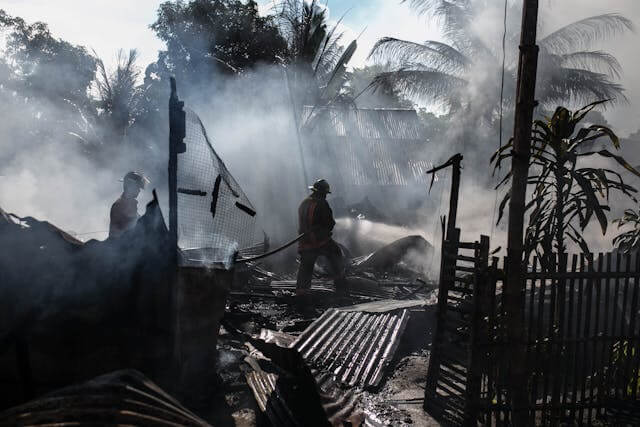
According to sources, retrocessional reinsurance arrangements are not expected to play a particularly significant role in supporting reinsurers losses from the Los Angeles, California wildfires, aside from support being received through quota share arrangements and collateralized sidecar structures.The latest on the insurance and reinsurance market impact from the wildfires is that catastrophe risk modeller loss estimates now have .Equity analysts have suggested that at an industry loss of up to $30 billion, the global reinsurance market could shoulder between 10% and 15% of the total.While at levels above $30 billion of industry loss, the percentage share for reinsurers is expected to creep somewhat higher.
There is still some uncertainty related to how the wildfire events will be treated, with some insurers seemingly able to call on reinsurance support based on it being a single event, others as two and .Those reinsurance terms and conditions related decisions have ramifications for the eventual toll that the reinsurance market and reinsurance capital providers shoulder.Meaning the percentage share of the overall insurance industry loss from the wildfires, for the reinsurance market to take, could be higher.
But, even at around $35 billion, Fitch Ratings noted today that for the big four European reinsurers this would likely only erode about 30% of their 2025 catastrophe budgets.A $45 billion industry loss, so the top-end of modeller’s current estimates for the wildfires, could eat up about 38% of the big four reinsurers catastrophe budgets, Fitch explained.At the 30% level, our sources suggest, the retrocessional support received may be relatively limited, outside of proportional risk sharing arrangements, such as retro quota shares and reinsurance sidecars.
That goes for the big four, but also more broadly across the global reinsurer landscape, we are told.The wildfires are expected to be an event that sees some attritional losses flow through many reinsurance sidecars that are in the market at this time.With many of the sidecar structures retrocessional in their nature, this could become one of the larger vectors through which a share of losses flow to the overall ILS and alternative reinsurance capital market investor base, from these fires.
As we explained earlier this week, .On the excess-of-loss protection side of retrocession, we’re told this may only selectively attach some lower occurrence layers where there is said to be some ILS market, or third-party capital, investor base participation.But overall this is not currently expected to prove that significant at all, unless the industry loss moves towards the upper-end of estimates or higher, bringing more attachment points into play.
The reason being that, like across reinsurance contracts, attachments for retrocessional arrangements structured on an excess-of-loss basis have moved higher over the last few years of renewals.While it’s also true that, up until this January 1 when there was a bit more retrocession purchased, many reinsurers have reduced their retro purchases due to the rising cost of coverage.Some major reinsurers have also reduced their cessions because of a desire to retain a greater proportion of the economics generated by their property catastrophe underwriting, while rates-on-line of their inwards business remain at historically higher levels.
Like in the catastrophe bond market, there will be some aggregate retro arrangements exposed, but similar to the cat bonds we’ve analysed these are expected to only see some erosion of attachment deductibles from the wildfires.Worth pointing out though that with many aggregate retro arrangements incepting at 1/1, this is a meaningful start to the year for some, in terms of that erosion of buffers sitting beneath their attachments.Thinking back to the last major California wildfire losses, in 2017 and 2018, the retrocession market took a higher share of the industry loss than is expected to be the case with these 2025 wildfires, our sources expect.
That’s not to say there won’t be any excess-of-loss retro exposure.It’s likely there are some arrangements in the market which may attach.But sources in the broking community we have spoken with are not expecting it to be a particularly significant source of recovery for the reinsurer community, at this time and based on the roughly $30 billion average of loss estimates.
It’s worth also noting that in recent reinsurance broker reports they have stated that retrocession arrangements went though 2024 largely avoiding any major loss impact, despite the occurrence of significant hurricane events Helene and Milton that drove roughly $20 billion in losses each and an overall heavy year for insured catastrophe losses.All the above said, we have heard some market rumours of capital being deployed to retro opportunities where the wildfire peril has been incorporated again for 2025, having been a peril that was not included over the last few years.It’s said these were thought to be aggregate arrangements though.
That’s perceived as another feature of the softening and more accommodating marketplace that reinsurers have encountered in recent months..All of our Artemis Live insurance-linked securities (ILS), catastrophe bonds and reinsurance can be accessed online.Our can be subscribed to using the typical podcast services providers, including Apple, Google, Spotify and more.
Publisher: Artemis








